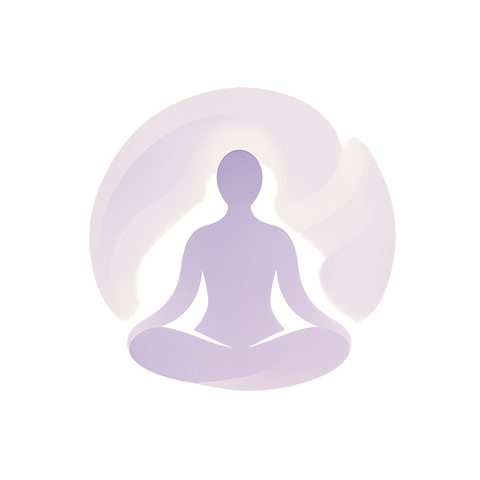In the quiet moments between the rush of daily life, we often find ourselves at a crossroads: the need to honor our inner selves, the desire for outward beauty, and the responsibility we carry toward our mental well‑being. An honest self‑reflection on these intersections can illuminate a path that is both grounded in reality and infused with a deeper sense of purpose. Central to this exploration is the concept of emotional orientation, a lens through which we examine how our feelings shape our choices, our relationships, and ultimately our sense of belonging in the world.
Understanding Emotional Orientation
Emotional orientation refers to the habitual way we perceive and respond to emotional stimuli. It is the invisible framework that guides our judgments, influences our habits, and determines how we engage with the external environment. When our emotional orientation is aligned with authenticity, it empowers us to make decisions that reflect our truest self rather than conforming to external expectations.
Three core dimensions of emotional orientation can be identified:
- Awareness: The capacity to recognize and label emotions as they arise.
- Acceptance: The willingness to experience emotions without judgment or suppression.
- Integration: The ability to translate emotional insight into actionable change.
By cultivating each dimension, we can develop a more resilient inner life that supports both mental health and personal growth.
The Soul’s Quiet Call
Every individual carries a unique soul narrative—a tapestry woven from childhood memories, cultural influences, and the quiet moments of introspection. Listening to this narrative requires a deliberate pause, an intentional return to the present, and a readiness to accept what surfaces. When emotional orientation is tuned to the subtle frequencies of the soul, we are better equipped to discern which external influences serve or hinder our authentic path.
Practicing mindfulness meditation, journaling, or simply sitting in silence can help us attune to this inner voice. For instance, a gentle curiosity about a recurring dream or a sudden, inexplicable spark of joy can guide us toward meaningful pursuits that resonate with our soul’s deeper longing.
Spirituality as a Mirror for Self‑Education
Spirituality is not confined to any particular doctrine or ritual; rather, it is a personal dialogue with the mysteries of existence. When approached as a continuous learning process, spirituality invites us to ask profound questions: Who am I beyond my roles? What is the purpose of my suffering? How can I transform pain into compassion?
Self‑education in this context is a lifelong journey. Engaging with diverse perspectives—philosophy, psychology, science, and art—helps broaden our horizons. By challenging preconceptions and encouraging intellectual curiosity, we create fertile ground for personal transformation. This intellectual exploration, when aligned with our emotional orientation, nurtures a holistic sense of well‑being.
Practical Steps for Spiritual Self‑Education
Below is a concise guide that blends emotional orientation with spiritual learning:
- Set a regular time for reflection—whether it’s morning journaling or evening meditation—to foster consistency.
- Choose a resource that resonates—books, podcasts, or workshops—and engage actively by taking notes.
- Reflect on how new insights influence your emotional landscape, noting shifts in mood or perspective.
- Apply one actionable lesson each week, observing its impact on your daily interactions.
- Share your journey with a trusted community to reinforce accountability and receive support.
Beauty as an Extension of Inner Light
Beauty transcends superficial aesthetics; it reflects the harmony between our inner state and outward expression. Skin care, for example, is more than a routine of cleansers and moisturizers—it is a ritual of self‑love and mindfulness. When we approach beauty practices with an emotionally oriented mindset, we shift the focus from achieving perfection to nurturing well‑being.
A balanced skin care regimen grounded in simplicity can reduce anxiety, improve sleep, and reinforce a positive body image. Additionally, choosing natural, cruelty‑free products can align with ethical values, creating a congruent narrative between our inner and outer selves.
Key Elements of a Mindful Beauty Routine
- Hydration: Drinking enough water supports skin elasticity and overall vitality.
- Nutrition: A diet rich in antioxidants, healthy fats, and vitamins supports cellular renewal.
- Mindful Application: Taking time to breathe and observe the texture of a product can turn routine into ritual.
- Self‑Compassion: Acknowledging that imperfections are part of the human experience reduces self‑criticism.
- Routine Flexibility: Adjusting steps based on season or emotional state ensures the practice remains responsive and sustainable.
Mental Health: The Anchor of Emotional Orientation
Good mental health is the foundation upon which emotional orientation can flourish. Recognizing early signs of distress—such as persistent sadness, intrusive thoughts, or physical tension—allows for timely intervention. Embracing a proactive stance means combining professional guidance with personal practices.
When emotional orientation is in harmony with mental health, we experience increased resilience, improved self‑awareness, and a greater capacity to navigate life’s uncertainties.
Strategies for Strengthening Mental Health
- Maintain regular sleep hygiene to support emotional regulation.
- Engage in physical activity that aligns with personal preference—yoga, walking, or dancing.
- Practice gratitude journaling to reframe negative thought patterns.
- Seek professional support when needed; therapy can provide tools to enhance emotional orientation.
- Build a supportive community that encourages authentic self‑expression.
Integrating the Elements: A Personal Blueprint
While each domain—soul, spirituality, beauty, and mental health—has its distinct focus, the true power lies in their intersection. Here is a customizable blueprint that can guide your daily practices toward a cohesive, emotionally oriented life:
- Morning: Begin with a 5‑minute mindful breathing session to center your emotional orientation.
- Mid‑day: Consume a balanced meal that nourishes both body and mind.
- Afternoon: Allocate 15 minutes for journaling—note any emotional shifts and insights from the day.
- Evening: Perform a gentle skin care ritual, turning it into a moment of gratitude.
- Night: End with a reflection on what resonated with your soul, setting an intention for tomorrow.
Adjusting the frequency and depth of each step based on personal needs ensures sustainability. Over time, these practices can reinforce a stable emotional orientation, fostering resilience, clarity, and a richer sense of purpose.
Final Reflections
Embracing emotional orientation as a guiding principle invites us to explore the intricate web of soul, spirituality, self‑education, beauty, and mental health. It encourages a life that is not only aesthetically pleasing but also profoundly aligned with our deepest values. By consciously cultivating awareness, acceptance, and integration, we can transform everyday moments into sacred opportunities for growth. In doing so, we honor the essence of our humanity—an ever‑evolving dance between inner insight and outer expression.



